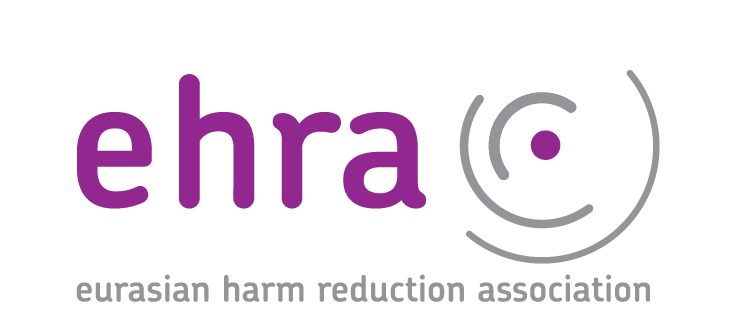New UNAIDS report highlights the effectiveness and need to continue and improve the Fast-track approach
- 25.11.2016 12:24
- Post Views: 926
 This 136-pages document is divided into sections based on the various stages of a person’s life (children, young people, key populations throughout the life cycle, adulthood and ageing (50+)) and provides key data on progress and gaps, country status, key challenges, the possible comprehensive approaches and opportunities and ways for closing the gaps for each period/group of people.
This 136-pages document is divided into sections based on the various stages of a person’s life (children, young people, key populations throughout the life cycle, adulthood and ageing (50+)) and provides key data on progress and gaps, country status, key challenges, the possible comprehensive approaches and opportunities and ways for closing the gaps for each period/group of people.
The life-cycle approach to HIV ensures that we need the best solutions for people throughout their lifetime. No one should be le behind through the life-cycle approach. Key populations, such as sex workers, people who inject drugs and men who have sex with men, prisoners and migrants, need access to the HIV treatment and prevention options that best meet their needs.
The insights revealed by the life-cycle approach must be leveraged to address one of the greatest challenges facing the global AIDS response: stalled progress on HIV prevention among adults. New infections among young women aged 15–24 years have declined by only 6% between 2010 and 2015, while the rate of new HIV infections among 25–49- year-old men and women is essentially flat. Meanwhile, new infections appear to be rising among people who inject drugs and men who have sex with men.
Measures to close this gap are readily available. A combination of HIV risk awareness, economic empowerment and oral pre-exposure prophylaxis (PrEP) together with social protection measures, assisted partner notification and self-test kits have all proven to be effective. Cities and countries that have put in place truly comprehensive HIV programmes tailored to the needs of key populations have successfully reduced new HIV infections among sex workers, people who inject drugs and men who have sex with men. These evidence-informed, high-impact approaches must be consistently applied across the life cycle, using a location–population approach that prioritizes the geographical areas and populations in greatest need.
At the same time, UNAIDS Executive Director Michel Sidibé stresses that resources will continue to be scarce and the need to show a return on investment will be stronger than ever before. And with no reduction in the global number of new HIV infections among adults in the past five years, and rising numbers of new infections in some regions of the world (incl. EECA), we need to realize that if there is a resurgence in new HIV infections now, the epidemic will become impossible to control.
On this World AIDS Day, he calls on world leaders, partners, activists, communities and people living with HIV to get on the Fast-Track to end this epidemic.
The report features the following data on the EECA region:
Regional HIV data in 2015
People living with HIV (total) – 1.5 million [1.4 million–1.7 million]
New HIV infections
- total – 190 000 [170 000–200 000]
- Aged 15+ – 190 000 [170 000–200 000]
- Aged 0–14 – NO DATA*
AIDS-related deaths – 47 000 [39 000–55 000]
Total number accessing antiretroviral therapy – 320 000
* this data isn’t available only in EECA and in Western and central Europe and North America
Regional antiretroviral therapy in 2015
Percentage of adults (aged 15+) living with HIV accessing antiretroviral therapy – 21% [19–22%]
The data for children of 14 and under and pregnant women was unavailable for our region at the time of publication.
Adults and children estimated to be living with HIV (2015) – 1.5 million [1.4 million–1.7 million] out of 36.7 million [34.0 million–39.8 million] worldwide
Estimated number of adults and children newly infected with HIV (2015) – 190 000 [170 000–200 000] out of 2.1 million [1.8 million–2.4 million] worldwide
As you can see from the graph presented below these numbers dramatically increasing for our region over the last 5 years.

Estimated adult and child deaths from AIDS (2015) – 47 000 [39 000–55 000] out of 1.1 million [940 000–1.3 million] worldwide
The data for children (<15 years) estimated to be living with HIV, newly infected with HIV and the estimated deaths in children (<15 years) from AIDS up to 2015 was unavailable for our region at the time of publication.
On page AIDS by the numbers on pp. 104-131 you can see this data presented visually in comparison with data from other regions.
In this report UNAIDS also introduces the aidsinfo.unaids.org website, where you can get additional and more detailed data, including:
- Additional Global AIDS Response Progress Reporting Indicators on prevention, mother-to-child transmission, 90–90–90 targets, stigma and discrimination
- A Key Population Atlas of maps on key populations, including the latest available data on key populations at increased risk of HIV infection.
- Estimates of new HIV infections, people living with HIV and AIDS-related deaths by different age groups, children (age 0–14 years), adolescents (age 10–19 years), young people (age 15–24 years), adults (age 15–49) older people (age 50 years and over), and by sex
- Subnational data for selected countries
- Data in different formats: spreadsheet, maps, graphics
- Comparable data over multiple years, and across countries, which can also be extracted to spreadsheets for further analysis.
You can read the full version of the report in English here.
Related News
Get Engaged in the ‘UNAIDS Strategy Beyond 2021’ Development Process
UNAIDS is now in the process of developing its next Strategy for 2021 and beyond. The timeline for developing the Strategy was supposed to have started early this year, but it was hampered by the COVID-19 pandemic. It has now been extended to accommodate a longer consultation period to ensure a full and more meaningful […] Read moreRoundtable organized by Global Fund
On 26 May (Russian) and 27 May (English) at 10.00 am (Geneva time) Developing Country NGO delegation of the Global Fund Board and the Global Fund Secretariat are organizing the Roundtable “Responses to HIV and TB in times of COVID-19 – strengthening engagement with civil society and communities in Eastern Europe and Central Asia (EECA)” […] Read moreCOVID-19 lessons: what can make the HIV programs in the EECA countries more sustainable? (LIVE discussion)
On May 5, 2020, from 11:00 a.m. to 1:00 p.m. EST (UTC+3), Alliance for Public Health will conduct a special LIVE discussion will be held on opportunities to improve the sustainability of national HIV programs that have emerged in connection with COVID-19. Post Views: 881 Read moreServices for migrants and refugees from Ukraine – HIV/TB care with a focus on key populations
Due to the increasing flows of refugees from Ukraine because of Russia’s invasion of Ukraine, the EECA Regional Platform created a spreadsheet to fill contacts details of face-to-face and online services for refugees and migrants (with a focus on HIV/TB care and key population groups).
Regional Platform – EECA
This web-resource is a part of new regional communication and coordination project “Regional Civil Society and Community Support, Coordination and Communication Platform - EECA”, implemented by Eurasian Harm Reduction Association (EHRA).
Tags
See also
-
EECA’s Regional Platform monthly Newsletter #17, October 2025 21.10.2025 11:18
-
Technical support: Global Fund’s CE TA Program 2024 20.10.2025 09:28
-
EECA’s Regional Platform monthly Newsletter #16, September 2025 18.09.2025 16:23







